Improper maintenance, the aging process of time, and corrosion plus the lack of a ground-fault circuit-interrupter (GFCI), a device that prevents electrocution, has made underwater swimming pool light fixtures installed prior to the enforcement of the 1975 National Electrical Code (NEC®) a potential source for electrocution.
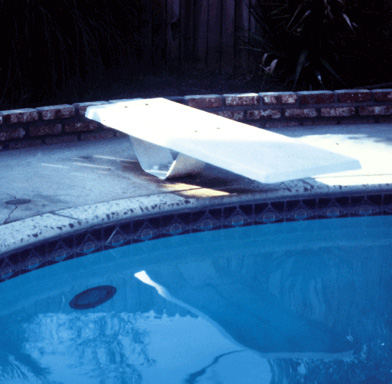
Figure 1. This flush deck junction box serves an underwater light fixture. Flush desk boxes have been allowed sincet he 1971 NEC only on lighting systems of 15 volts or less and when filled with an approved potting compound and located not less than 4 feet from the inside wall of the pool.
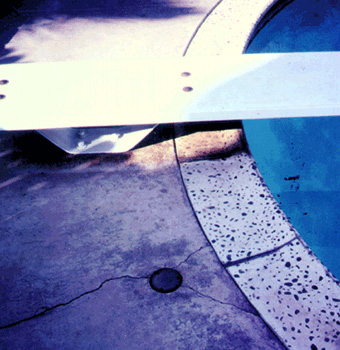
Figure 2. This flush desk box is too close to the inside wall of the pool (4 feet minimum distance required).
This hazard, however, may be eliminated by proper maintenance and the installation of a new light fixture protected by a GFCI device.
In recent years, California has been the site of several unfortunate and unnecessary deaths due to electrocution by these obsolete installations. These deaths could have been prevented by 1) notifying the public through newspapers, radio, television and posted bulletins of the potential hazards; 2) advising the public through the same channels of the steps to remedy the problem; 3) requiring permits to be issued for the corrective work; and 4) requiring proper inspection to insure that the corrections meet NEC® requirements.

The NEC® did not address swimming pools until 1962, when “Article 680 – Swimming Pools,” first appeared in the Code. From 1962 until the 1975 edition of the NEC®, GFCI protection was only optional. The 1962 NEC® Section 680-2(g) read as follows:
“All circuits supplying underwater fixtures should be isolated. If the circuit voltage is greater than 30 volts, an approved fail-safe ground detector device which automatically de-energizes the circuit or an approved grid structure or similar safeguard should be used.”
Consequently, thousands of swimming pool underwater light fixtures were installed without GFCI protection. After years of exposure to chlorinated water, serious hazards now exist.
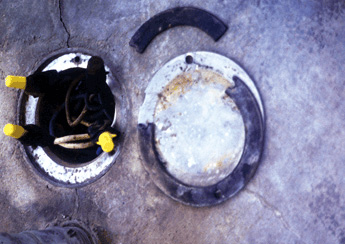
The 1975 NEC® was the first to mandate GFCI protection for underwater light fixtures operating at more than 15 volts. The 1975 NEC® Section 680-20(a)(1) stated:
“In addition, a ground-fault circuit-interrupter shall be installed in the branch circuit supplying fixtures operating at more than 15 volts, so that there is no shock hazard during relamping. The installation of the ground-fault circuit-interrupter shall be such that there is no shock hazard with any likely fault-condition combination that involves a person in a conductive path from any ungrounded part of the branch circuit or the fixture to be grounded.”
All editions of the NEC® since 1975 have this GFCI requirement.
Illustrations
The following illustrations show examples of these early installations.
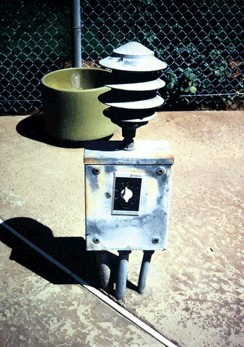
Figures 1 and 2 show a flush deck junction box that serves an underwater light fixture. Flush deck boxes have been allowed since the 1971 NEC® only on lighting systems of 115 volts or less and when filled with an approved potting compound and located not less than 4 feet from the inside wall of the pool.
Many of these early flush deck boxes lack the above requirements and as the two deck boxes in Figures 3 and 4 illustrate, pose hazards. These hazards include deteriorated boxes, cover gaskets, and conductors. Figure 4 also illustrates a deck box being used as a junction box for a circuit supplying a garage subpanel.
Circuits supplying underwater fixtures have been required to be isolated since the 1962 Code (see above) but as illustrated in Figures 4, 5 and 6 many boxes and enclosures serving underwater light fixtures are being used as junction boxes for circuits supplying other pieces of equipment (i.e., timers, deck lights and garage circuits). This wiring method has been a violation of the Code since the 1962 edition of the NEC®
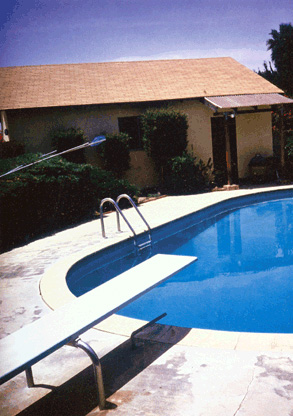
In 1968, the NEC® first required encapsulating the flexible cord conductor terminations within the light fixture. Section 680-4(1) reads as follows:
“The end of the flexible cord conductor terminations within a fixture shall be covered with or encapsulated in a suitable potting compound to prevent the entry of water into the fixture through the cord or its conductors. In addition, the grounding connection within a fixture shall be similarly treated to protect such connection from the deteriorating effect of pool water in the event of water entry into the fixture.”
As Figures 7 and 8 show, there are light fixtures installed which do not afford this added protection.
These obsolete fixtures will also trip today’s GFCI devices because they leak too much current. Because of these facts, you must install both a new light fixture and a GFCI device. This combination will eliminate the shock hazard that exists with these earlier installations.
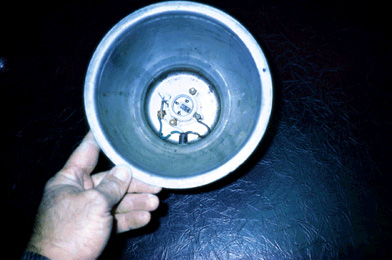
One additional hazard that should be mentioned is non-GFCI protected, 125-volt receptacles located within 20 feet of the inside walls of pools. These receptacles should also be protected by a GFCI device.
GFCI protection for receptacles located between 10 and 15 feet of the pool was first required in the 1971 NEC®. Since the 1984 NEC®, that distance was extended to include all 125-volt receptacles within 20 feet of the pool.
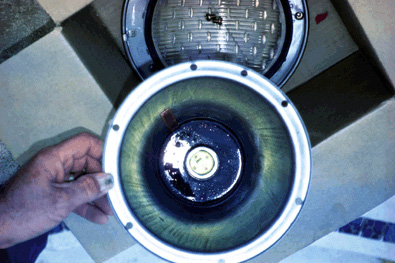
The hazards discussed in this article may be eliminated by proper maintenance and the installation of a new light fixture protected by a GFCI device. GFCI protection should also be provided for all 125-volt receptacles within 20 feet of the pool.
Unless additional corrective measures are necessary, the estimated cost for labor and materials is $500. This is a small price to pay to protect against the further loss of life.











Find Us on Socials